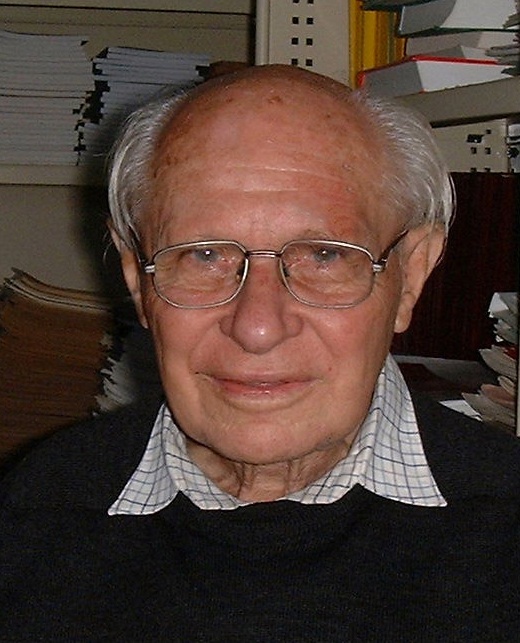- George Szekeres
Infobox_Scientist
name = George Szekeres

|300px
image_width = 300px
caption = George Szekeres, 2001
birth_date = birth date|1911|5|29|mf=y
birth_place =Budapest ,Hungary
death_date = death date and age|2005|8|28|1911|5|29|mf=y
death_place =Adelaide ,Australia
residence =
nationality = n
field =Mathematician
work_institution =University of Adelaide University of New South Wales
alma_mater =Technical University of Budapest
doctoral_advisor =
doctoral_students =John Schutz Alfred van der Poorten
known_for =Szekeres snark Kruskal-Szekeres coordinates Erdős–Szekeres theorem
prizes =
religion =
footnotes = Note that he has anErdős number of one.George Szekeres [Pronounced IPA|sæk.ɚ.æʃ] (
May 29 1911 –August 28 2005 ) was a Hungarian-Australianmathematician .Early years
Szekeres was born in
Budapest ,Hungary and received his degree in chemistry at the Technical University of Budapest. He worked six years in Budapest as an analytical chemist. He married Esther Klein in 1936. Being Jewish, the family had to escape from the Nazi persecution so Szekeres took a job inShanghai ,China . There they lived throughWorld War II , the Japanese occupation and the beginnings of the Communist revolution. Their son, Peter, was born in Shanghai.Career
In 1948, he was offered a position at the
University of Adelaide ,Australia that he gladly accepted. After all the troubles he had, he began flourishing as mathematician. A few years later, his daughter Judy was born. In 1963, the family moved toSydney , where Szekeres took a position atUniversity of New South Wales , and taught there until his retirement in 1975. He also devised problems for secondary school mathematics competitions run by the university where he taught and for a yearly undergraduate competition run by theSydney University Mathematics Society.Szekeres worked closely with many prominent mathematicians throughout his life, including
Paul Erdős ,Esther Szekeres (née Esther Klein),Paul Turán ,Béla Bollobás ,Ronald Graham ,Alf van der Poorten ,Miklós Laczkovich , andJohn Coates . He died inAdelaide ,Australia .A
festschrift was held in honour of Szekeres' ninetieth birthday at the University of New South Wales in May 2001. He was made a Member of theOrder of Australia (AM) in 2002.The Happy Ending problem
The so-called
Happy Ending problem is an example of how mathematics pervaded George's life. During 1933, George and several other students met frequently in Budapest to discuss mathematics. At one of these meetings,Esther Klein proposed the following problem::"Given five points in the plane ingeneral position , prove that four of them form a convexquadrilateral ."After allowing George,Paul Erdős , and the other students to scratch their heads for some time, Esther explained [http://www.maa.org/mathland/mathtrek_10_3_00.html her proof] . Subsequently George and Paul wrote a paper (1935) that generalises this result; it is regarded as one of the foundational works in the field ofcombinatorial geometry . Erdős dubbed the original problem the "Happy Ending" problem because it resulted in George and Esther's marriage in 1937.George and Esther died within a half an hour of each other, on the same day,
28 August 2005 .ee also
*
Powerful number
*Szekeres snark
*Generalized continued fraction
*Kruskal-Szekeres coordinates
*Erdős–Szekeres theorem Notes
References
* Giles, J. R., Wallis, J. S., "George Szekeres. With affection and respect," "Journal of the Australian Mathematical Society Series A", Vol 21 (1976), No 4, pp. 385–392.
* Cowling, M., "Obituary George and Esther Szekeres," "Gazette of the Australian Mathematical Society," Vol 32 (2005), No 4, pp. 221--224
* Erdős, P. and Szekeres, G., "A combinatorial problem in geometry," "Compositio Math.," Vol 2 (1935), pp. 463--470.External links
* [http://www-history.mcs.st-andrews.ac.uk/Biographies/Szekeres.html MacTutor Biography]
Persondata
NAME= Szekeres, George
ALTERNATIVE NAMES=
SHORT DESCRIPTION= Hungarian-Australia nmathematician
DATE OF BIRTH=May 29 ,1911
PLACE OF BIRTH=Budapest ,Hungary
DATE OF DEATH=August 28 ,2005
PLACE OF DEATH=Adelaide ,Australia
Wikimedia Foundation. 2010.
